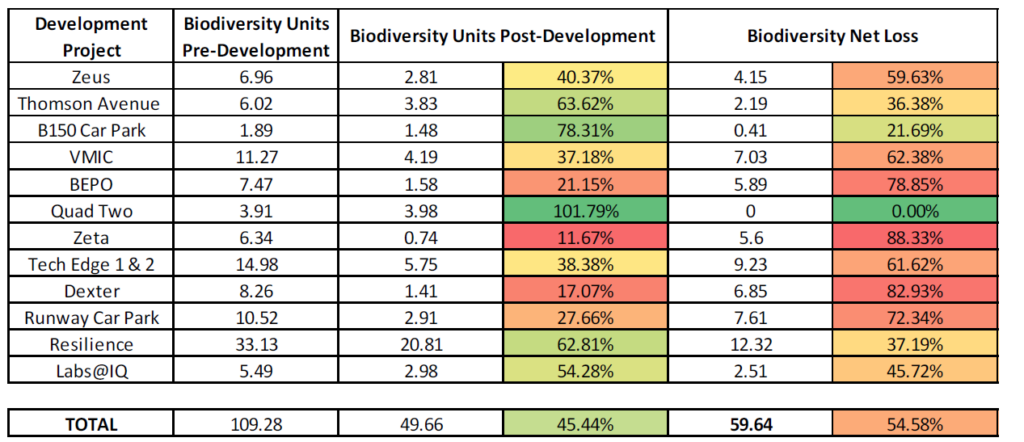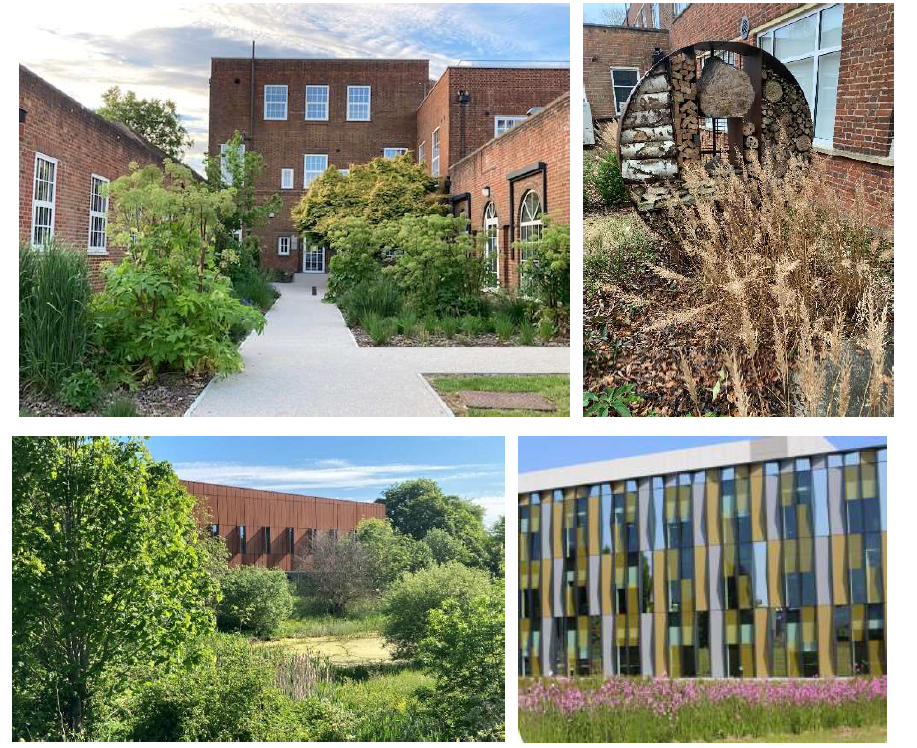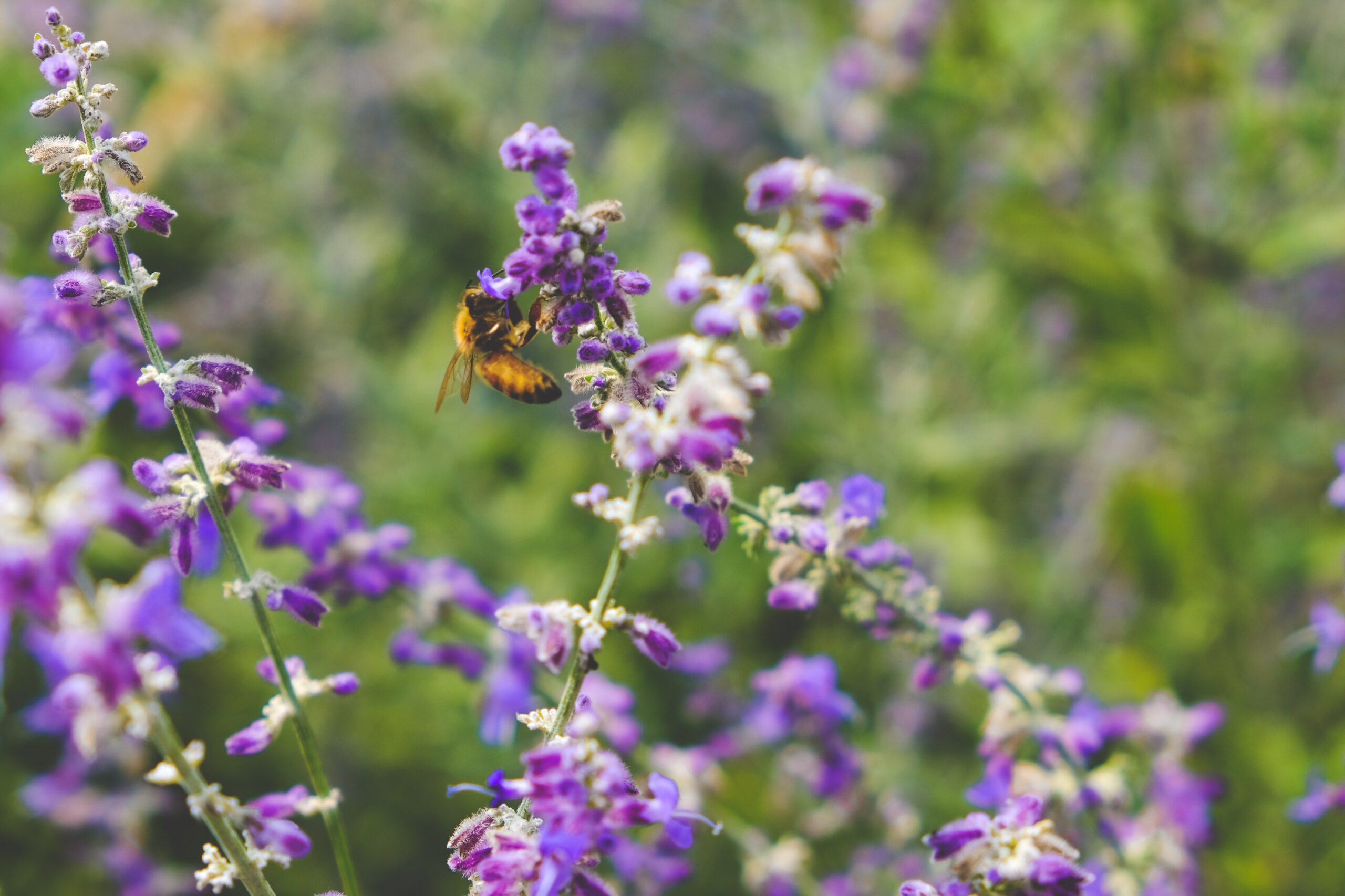At Harwell, we have a vision to develop a sustainable Campus for world-class science &
innovation, and to be recognised as a catalyst for sustainable growth.
In line with our commitment to increase biodiversity, we’ve designated specific re-wilding areas. The wildflowers that grow here will help our local fauna to thrive.
At Harwell, our goal is to create a campus that improves and supports the health and wellbeing of staff and visitors by utilising natural materials in our buildings through biophilic design, improving our recreational facilities, providing green & blue restorative and relaxation spaces, and offering beautiful outdoor meeting and breakout areas, enhanced with striking public art.
Towards the end of last year, four new solar-powered pods were installed on Campus to offer staff and visitors the opportunity to meet and collaborate in an alternative outdoor setting.
A Landscape Design Group was established, including botanical support from Adam Frost, with a brief to enhance the parkland and garden character of the Campus with diverse species. Last year we achieved the following goals around the campus –
– Wildflower meadows were created around the Quad Two development.
– Landscaping design around HQ included climate resilient species, fruit trees and plants as well as a bug hotel.
– Zeus was designed and developed to maximise tree preservation and to integrate the nearby pond in its landscape setting.
– BEPO was connected to the natural habitats adjacent to the site through planting and wildflowers sowing.
So far, Harwell Campus has been able to retain and/or replace 45% of the biodiversity on the development plots (i.e., within the red line boundary of each project) through habitat preservation and considerate landscape design. One development, Quad Two, even achieved a No Net Loss and a marginal net gain (+1.79%):

Why do some projects show higher % of biodiversity loss?
Typically, it is harder to maximise biodiversity within the landscape design on small development plots where there is limited space available (e.g., BEPO, Zeta, Dexter) whilst on bigger plots (e.g., Quad Two, Tech Edge 1 & 2, Resilience), there are more opportunities to retain and create habitats around the buildings. For example, Tech Edge 1 & 2 will include an ‘Ecology Trail’ within its surrounding landscape to give Campus’ users access to a unique connection to the natural environment, with the aim to enhance their health & wellbeing.
Harwell Campus will keep exploring introducing green roofs and green walls on these schemes
however, whilst these features can provide a benefit to people by providing an additional connection
to nature, they deliver limited biodiversity units and can be cost-prohibitive.
Advocating for Biodiversity

Harwell Campus actively promotes, and contributes to, Nature & Biodiversity leadership in the built environment by attending local roundtables (e.g., ‘Building Nature In: An Urgent Call for Action’ & ‘Biodiversity Net Gain Thought Leadership’, both organised at the Earth Trust) and by raising awareness across the Campus (e.g. Harwell Campus Green Week 2023).
Over the next months, Harwell Campus will be developing a Biodiversity Action Plan, building on its existing Biodiversity and Landscape Strategies, with the ambition to achieve The Wildlife Trust Biodiversity Benchmark Certification.
